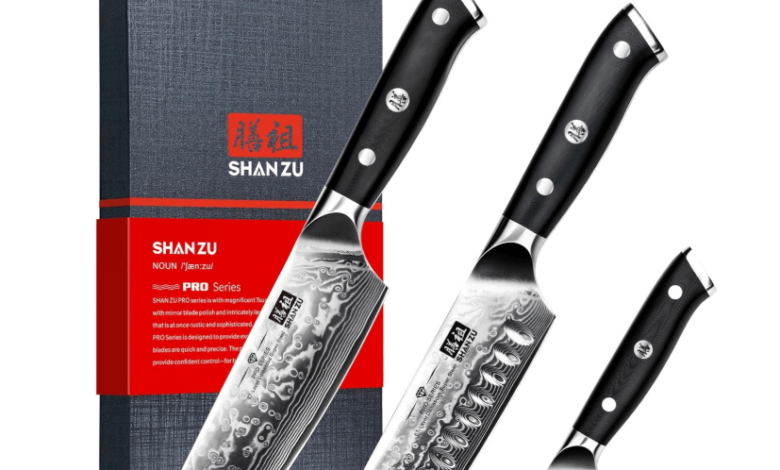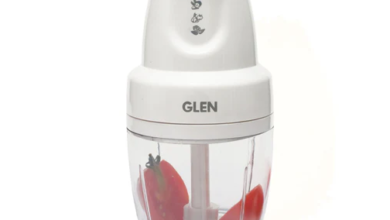Do You Really Need A Full Knife Set in Your Kitchen?

Step into any professional kitchen, and you’ll witness a flurry of blades, each with a specific purpose. This image of a vast collection, often sold as a gleaming knife set in a wooden block, has led many home cooks in the UK to believe they need an arsenal of knives to prepare a decent meal. But is this truly the case? Or is it a tale spun by clever marketing?
The truth is, while a professional chef benefits from a specialized tool for every task, the average UK kitchen operates on a different rhythm. For most daily cooking, a few high-quality, versatile knives can perform the overwhelming majority of tasks with grace and precision. This guide will cut through the noise, revealing the essential knives your kitchen truly needs and which ones are simply nice-to-have additions. We’ll explore the core blades that form the foundation of any great kitchen knife collection and show you how to build a setup that values masterful quality over sheer quantity.
The Unbeatable Trio: Essential Kitchen Knives
Forget the 15-piece block. For 90% of your kitchen tasks, you only need three core knives. Investing in high-quality versions of these will serve you far better than a block full of mediocre blades.
1. The Chef’s Knife: The Workhorse of the Kitchen
If you could only have one knife, it would be the chef knife. This is the undisputed champion of the kitchen, a true multi-purpose tool designed for a vast range of tasks. Typically ranging from 6 to 10 inches, its broad, gently curved blade is perfect for the rocking motion used for chopping, mincing, and dicing vegetables. The sturdy heel can handle tougher items like winter squash, while the pointed tip allows for more precise work.
A well-crafted chef knife feels like an extension of your hand. It’s the blade you’ll reach for to slice through chicken, chop onions, mince garlic, and dice carrots. Its weight and balance are crucial, providing the momentum needed to make food preparation feel effortless rather than a chore. For most UK home kitchens, an 8-inch chef knife offers the perfect balance of control and capability.
2. The Paring Knife: For Detail and Precision
What the chef’s knife accomplishes with power, the paring knife achieves with finesse. This small but mighty blade, usually 3-4 inches long, is designed for tasks that require delicate, in-hand work. Think of it as the artist’s brush in your knife collection.
Its sharp, precise tip is ideal for peeling fruits and vegetables, de-veining prawns, hulling strawberries, and scoring pastry. When a larger blade feels clumsy and oversized, the paring knife steps in to perform with surgical accuracy. It’s the tool you’ll use to remove the eyes from potatoes or segment an orange with clean, beautiful cuts.
3. The Bread Knife: The Serrated Specialist
No other knife can tackle a crusty loaf of sourdough quite like a bread knife. Its long, serrated blade acts like a saw, gripping and cutting through hard exteriors without crushing the soft interior. This makes it indispensable for slicing bread, bagels, and even delicate cakes.
But its utility doesn’t end there. A bread knife is also fantastic for slicing through foods with tough skins and soft insides, like large tomatoes or ripe melons. The serrated edge allows you to initiate the cut without applying excessive pressure, preserving the food’s integrity. For any household that enjoys fresh bread, this is a non-negotiable part of the essential trio.
Specialty Knives: The “Nice-to-Have” Blades
Once you have your core trio, you might consider adding a few specialty knives to your collection. These aren’t essential for everyday cooking, but they perform specific tasks with an efficiency that a chef knife can’t quite match.
- Utility Knife:Sitting between a chef’s knife and a paring knife in size (usually 4-7 inches), the utility knife is a nimble tool for mid-sized tasks. It’s perfect for slicing sandwiches, chopping smaller vegetables, or cutting citrus. If you often find a chef’s knife too cumbersome and a paring knife too small, a utility knife could be a welcome addition.
- Boning Knife:For those who frequently prepare meat or fish from scratch, a boning knife is invaluable. Its thin, flexible blade is designed to navigate around bones and joints with precision, helping you to debone chicken, trim fat, and fillet fish with minimal waste.
- Carving Knife:Essential for the Sunday roast, a carving knife features a long, narrow blade that allows you to slice through large cuts of meat like turkey, ham, or beef with clean, uniform strokes. It’s often paired with a carving fork to hold the meat steady. While you can use a chef’s knife, a dedicated carving knife makes the process smoother and more elegant.
Smart Alternatives to a Large Knife Set
Building a collection of high-quality knives can be an investment. If you’re not ready to purchase specialty blades, there are other ways to handle specific tasks.
- Kitchen Shears:A good pair of kitchen shears can handle many jobs, from spatchcocking a chicken to snipping fresh herbs. They can even be used to cut pizza or portion out bacon.
- Vegetable Peeler:While a paring knife can peel vegetables, a Y-peeler or swivel peeler is often faster, safer, and creates less waste.
- Master Your Chef’s Knife:Before buying more knives, spend time mastering your chef knife. A skilled cook can use it for a surprising number of tasks, from fine mincing to portioning meat. Learning proper techniques can eliminate the perceived need for many specialty blades.
Storing and Caring for Your Knives
A sharp knife is a safe knife. Dull blades require more pressure, increasing the risk of slipping and causing injury. Proper storage is also crucial for maintaining the blade’s edge and ensuring safety in your kitchen.
- Magnetic Strips:Wall-mounted magnetic strips are an excellent storage solution. They keep your knives within easy reach, save counter space, and prevent the blades from knocking against each other.
- Knife Blocks:A traditional knife set block is a popular choice, but ensure the slots are horizontal. Vertical slots can dull the blade’s tip over time.
- In-Drawer Holders:If you prefer to store knives in a drawer, use a dedicated knife holder to protect the blades and your fingers.
Never put your quality kitchen knives in the dishwasher. The harsh detergents, high heat, and jostling can damage the blade and handle. Always wash them by hand with warm, soapy water and dry them immediately to prevent rust.
Build a Collection That Serves You
In the world of kitchen knives, more is not always better. A complete knife set might look impressive on your countertop, but a few exceptional, well-chosen knives will always outperform a dozen mediocre ones.Start with the essential trio: a high-quality chef knife, a nimble paring knife, and a serrated bread knife. Master these tools, understand their strengths, and let them become the foundation of your culinary adventures. From there, you can thoughtfully add specialty knives that align with the way you cook. By focusing on quality over quantity, you’ll build a collection that is not only a joy to use but will serve you faithfully for years to come.





